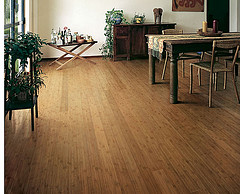- 111 reads

Homeowners have a number of flooring options from which to choose. Options include ceramic tile, vinyl, linoleum, bamboo, hardwood, carpet made of natural or a variety of synthetic fibers, and more. The differences in environmental impacts between these various options are large. For those interested in minimizing the environmental impacts associated with their choice of flooring material, finding reliable information about the impacts and trade-offs can be daunting.
A new report from Dovetail Partners, a Minneapolis-based non-profit, examines available life cycle assessment (LCA) data for alternative flooring products. The findings provide a useful guide for selecting green flooring materials.
National Standards
The Building for Energy and Environmental Sustainability (BEES) program of the National Institute of Standards and Technology (NIST) is the most comprehensive source of LCA-based information for floor covering products. NIST product evaluations are comprehensive, and are reviewed by a Scientific Advisory Panel of the Environmental Protection Agency as well as a Stakeholder Panel.
The BEES program provides life-cycle based comparisons of approximately 25 floor covering products, including ceramic tile, linoleum, vinyl tile, marble tile, terrazzo, cork tile, and nylon and wool carpet. The comparisons look at 12 environmental attributes, including global warming, acidification, eutrophication, fossil fuel depletion, indoor air quality, human health, habitat alteration, criteria air pollutants, ecological toxicity, water intake, ozone depletion and smog.
In addition to the BEES data, the report also reviews flooring research completed in Europe and Canada, and several recent studies completed in the United States.
“Overall, our review found that floor coverings made from bio-based materials, such as wood and cork have substantially lower environmental impacts than vinyl, ceramic tile, and wool and nylon carpeting,” says Kathryn Fernholz, Executive Director of Dovetail Partners.
There are some limitations to the available information. To date, for example, there has been no published life cycle assessment of bamboo flooring. Information on carpeting is also limited in that BEES focuses on floor coverings typically used in commercial building and institutions rather than those used in residential structures.
Unfortunately, the BEES database does not yet include information on such flooring options as hardwood or bamboo.
“However,” says Bowyer, “in those comparisons in which wood flooring products have been among the options considered, the wood flooring has generally been found to have the lowest environmental impact.”
The full report is available at the Dovetail Partners website and includes the ranking of eleven alternative flooring products in terms of their environmental performance.

